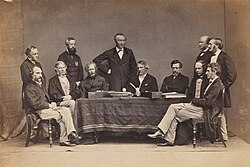
The Governor-General of India was the representative of the monarch of the United Kingdom in their capacity as the Emperor/Empress of India and after Indian independence in 1947, the representative of the Monarch of India. The office was created in 1773, with the title of Governor-General of the Presidency of Fort William. The officer had direct control only over his presidency but supervised other East India Company officials in India. Complete authority over all of British territory in the Indian subcontinent was granted in 1833, and the official came to be known as the "Governor-General of India".
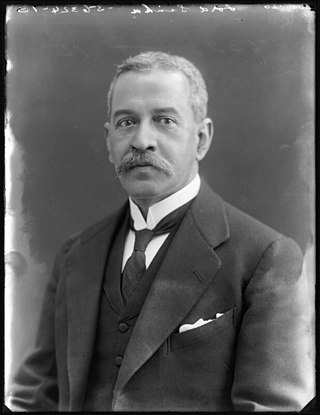
Satyendra Prasanna Sinha, 1st Baron Sinha, KCSI, PC, KC, was a prominent British Indian lawyer and statesman. He was the first Governor of Bihar and Orissa, first Indian Advocate-General of Bengal, first Indian to become a member of the Viceroy's Executive Council and the first Indian to become a member of the British ministry. He is sometimes also referred as Satyendra Prasanno Sinha or Satyendra Prasad Sinha.
The Montagu–Chelmsford Reforms or more briefly known as the Mont–Ford Reforms, were introduced by the colonial government to introduce self-governing institutions gradually in British India. The reforms take their name from Edwin Montagu, the Secretary of State for India from 1917 to 1922, and Lord Chelmsford, the Viceroy of India between 1916 and 1921. The reforms were outlined in the Montagu-Chelmsford Report, prepared in 1918, and formed the basis of the Government of India Act 1919. These are related to constitutional reforms. Indian nationalists considered that the reforms did not go far enough, while British conservatives were critical of them. The important features of this act were that:
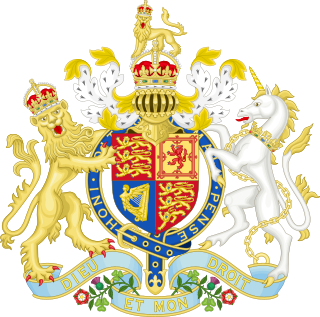
The Indian Councils Act 1909, commonly known as the Morley–Minto or Minto–Morley Reforms, was an act of the Parliament of the United Kingdom that brought about a limited increase in the involvement of Indians in the governance of British India. Named after Viceroy Lord Minto and Secretary of State John Morley, the act introduced elections to legislative councils and admitted Indians to councils of the Secretary of State for India, the viceroy, and to the executive councils of Bombay and Madras states. Muslims were granted separate electorates according to the demands of the Muslim League.

The Government of India Act 1919 was an Act of the Parliament of the United Kingdom. It was passed to expand participation of Indians in the government of India. The Act embodied the reforms recommended in the report of the Secretary of State for India, Edwin Montagu, and the Viceroy, Chelmsford. The Act covered ten years, from 1919 to 1929. This Act began the genesis of responsible government in India. It was set to be reviewed by the Simon Commission in 10 years.
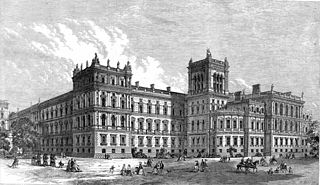
The India Office was a British government department in London established in 1858 to oversee the administration of the Provinces of India, through the British viceroy and other officials. The administered territories comprised most of the modern-day nations of the Indian Subcontinent as well as Yemen and other territories around the Indian Ocean. The India Office was headed by the Secretary of State for India, a member of the British cabinet, who was formally advised by the Council of India.

The British Raj was the rule of the British Crown on the Indian subcontinent; it is also called Crown rule in India, or Direct rule in India, and lasted from 1858 to 1947. The region under British control was commonly called India in contemporaneous usage and included areas directly administered by the United Kingdom, which were collectively called British India, and areas ruled by indigenous rulers, but under British paramountcy, called the princely states. The region was sometimes called the Indian Empire, though not officially.

The Imperial Legislative Council (ILC) was the legislature of British India from 1861 to 1947. It was established under the Charter Act of 1853 by providing for the addition of 6 additional members to the Governor General Council for legislative purposes. Thus, the act separated the legislative and executive functions of the council and it was this body within the Governor General's Council which came to known as the Indian/Central Legislative Council. In 1861 it was renamed as Imperial Legislative Council and the strength was increased.
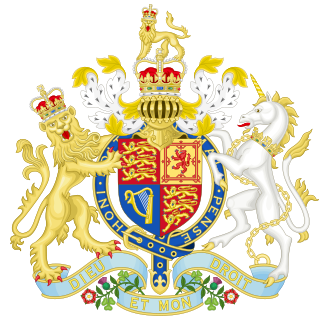
The Indian Councils Act 1861 was an Act of the Parliament of the United Kingdom that transformed India's executive council to function as a cabinet run on the portfolio system. This cabinet had six "ordinary members", who each took charge of a separate department in Calcutta's government: home, revenue, military, law, finance, and public works. The military Commander-in-Chief sat in with the council as an extraordinary member. The Executive Council was enlarged by addition of fifth member. The Viceroy was allowed, under the provisions of the Act, to overrule the council on affairs if he deemed it necessary, as was the case in 1879, during the tenure of Lord Lytton.

The Government of Bihar or Bihar Government is the state government of the Indian state of Bihar and its nine divisions which consist of 38 districts. It consists of an executive, led by the Governor of Bihar, a judiciary and legislative branches.
The Executive Council of New South Wales is the cabinet of that Australian state, consisting of the Ministers, presided over by the governor.

The Central Legislative Assembly was the lower house of the Imperial Legislative Council, the legislature of British India. It was created by the Government of India Act 1919, implementing the Montagu–Chelmsford Reforms. It was also sometimes called the Indian Legislative Assembly and the Imperial Legislative Assembly. The Council of State was the upper house of the legislature for India.
The Viceroy's Executive Council was the cabinet of the Government of India headed by the Viceroy of India. It is also known as the Council of the Governor-General of India. It was transformed from an advisory council into a cabinet consisting of five members heading revenue, military, law, finance and home by the Indian Councils Act 1861 giving recognition to the portfolio system introduced by Lord Canning in 1859. In 1874, a sixth member was added to be in charge of public works.

The Council of State was the upper house of the legislature for British India created by the Government of India Act 1919 from the old Imperial Legislative Council, implementing the Montagu–Chelmsford Reforms. The Central Legislative Assembly was the lower house.

The Indian Red Cross Society (IRCS) is a voluntary humanitarian organization to protect human life and health based in India. It is part of the International Red Cross and Red Crescent Movement and shares the Fundamental Principles of the International Red Cross and Red Crescent Movement. The society's mission is to provide relief in times of disasters/emergencies and promote health and care of vulnerable people and communities. It has a network of over 700 branches throughout India. The Society uses the Red Cross as an emblem in common with other international Red Cross societies. Volunteering has been at the very heart of the Indian Red Cross Society since its inception in 1920, with the Society having Youth and Junior volunteering programmes. The Society is closely associated with St John Ambulance India.
The 1890 New Year Honours were appointments by Queen Victoria to various orders and honours of the United Kingdom and British India.
The 1892 Birthday Honours were appointments by Queen Victoria to various orders and honours to reward and highlight good works by citizens of the British Empire. The appointments were made to celebrate the official birthday of The Queen, and were published in the London Gazette on 24 May 1892 and in The Times on 25 May 1892.
The 1911 Delhi Durbar was held in December 1911 following the coronation in London in June of that year of King George V and Queen Mary. The King and Queen travelled to Delhi for the Durbar. For the occasion, the statutory limits of the membership of the Order of the Star of India and the Order of the Indian Empire were increased and many appointments were made to these and other orders. These honours were published in a supplement to the London Gazette dated 8 December 1911.

The Legislatures of British India included legislative bodies in the presidencies and provinces of British India, the Imperial Legislative Council, the Chamber of Princes and the Central Legislative Assembly. The legislatures were created under Acts of Parliament of the United Kingdom. Initially serving as small advisory councils, the legislatures evolved into partially elected bodies, but were never elected through suffrage. Provincial legislatures saw boycotts during the period of dyarchy between 1919 and 1935. After reforms and elections in 1937, the largest parties in provincial legislatures formed governments headed by a prime minister. A few British Indian subjects were elected to the Parliament of the United Kingdom, which had superior powers than colonial legislatures. British Indian legislatures did not include Burma's legislative assembly after 1937, the State Council of Ceylon nor the legislative bodies of princely states.
